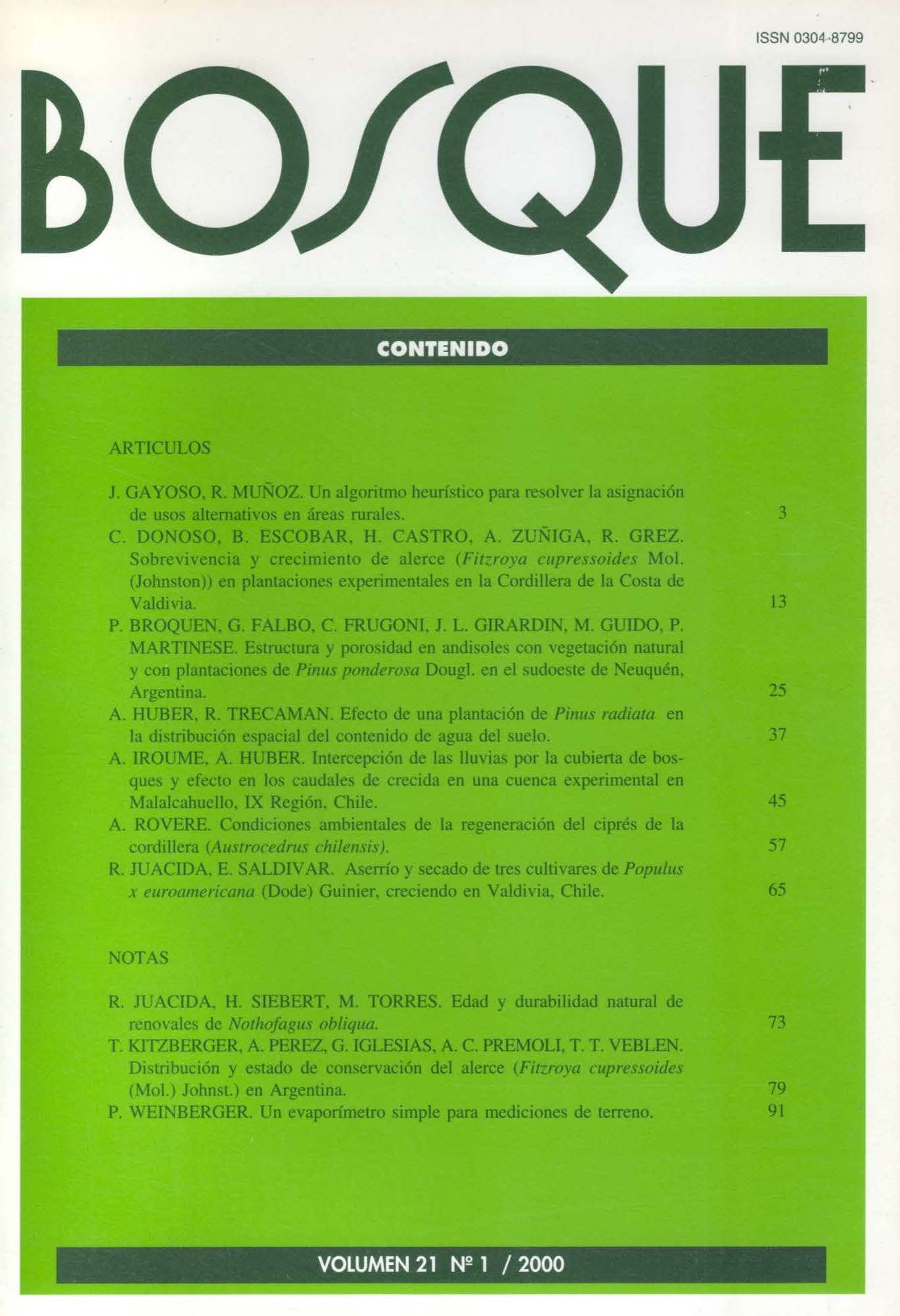Distribution and state of conservation of alerce (Fitzroya cupressoides (Mol.) Johnst.) in Argentina
Main Article Content
Abstract
Alerce (Fitzroya cupressoides (Mol.) Johnst.) is the largest and longest-lived conifer of the temperate forests of southern Chile and Argentina. Because of its high quality timber, this species has suffered a long history of intensive logging and range reduction, particularly in the central depression of Chile, an area considered central to its original distribution. In this context, populations that were initially considered marginal in Argentina have regained importance for the conservation of the species as a whole. This study compiled and analyzed the distribution and state of conservation of alerce populations in Argentina. Eighty five percent of the total area occupied by alerce (20.625 ha) was found to he within the national or provincial conservation system. The most extensive forests were mature pure stands and mature stands mixed with Nothofagus dombeyi and/or N. pumilio. In terms of number of populations, most consisted of small patches of relatively young riparian forest. Fifty nine percent of populations had signs of logging or browsing by cattle Herbivory was most frequent in smaller isolated forest patches. However, an important proportion of populations (37%), particularly extensive stands, had no signs of anthropogenic disturbance. Although these results reflect a relatively good conservation condition of the species in Argentina, we detected inadequate management practices at local levels as well as a lack of international strategies to protect the species as a whole.

